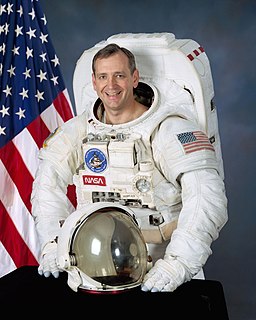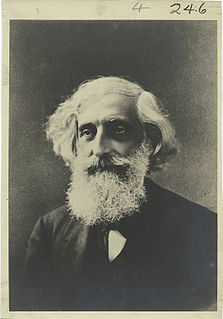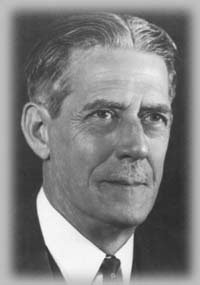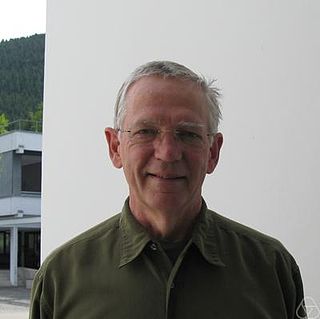 W
WThomas Dale Akers is a former American astronaut in NASA's Space Shuttle program.
 W
WRichard Allen Askey was an American mathematician, known for his expertise in the area of special functions. The Askey–Wilson polynomials are on the top level of the Askey scheme, which organizes orthogonal polynomials of hypergeometric type into a hierarchy. The Askey–Gasper inequality for Jacobi polynomials is essential in de Brange's famous proof of the Bieberbach conjecture.
 W
WJean Jennings Bartik was one of the original programmers for the ENIAC computer.
 W
WPeter G. Casazza, born June 28, 1945 in Albany, New York, is an American mathematician, presently working at the University of Missouri. He began his career as a Banach space theorist, but he is perhaps most well known for his role in the development of frame theory as a popular discipline of mathematical research.
 W
WWilliam Chauvenet was a professor of mathematics, astronomy, navigation, and surveying who was instrumental in the establishment of the U.S. Naval Academy at Annapolis, Maryland, and later the second chancellor of Washington University in St. Louis.
 W
WFriedrich "Fritz" Gesztesy is a well-known Austrian-American mathematical physicist and Professor of Mathematics at Baylor University, known for his important contributions in spectral theory, functional analysis, nonrelativistic quantum mechanics, ordinary and partial differential operators, and completely integrable systems. He has authored more than 270 publications on mathematics and physics.
 W
WWilliam Mark Goldman is a professor of mathematics at the University of Maryland, College Park. He received a B.A. in mathematics from Princeton University in 1977, and a Ph.D. in mathematics from the University of California, Berkeley in 1980.
 W
WMarshall Hall, Jr. was an American mathematician who made significant contributions to group theory and combinatorics.
 W
WEarle Raymond Hedrick, was an American mathematician and a vice-president of the University of California.
 W
WWallie Abraham Hurwitz was an American mathematician who worked on analysis.
 W
WEdwin Thompson Jaynes was the Wayman Crow Distinguished Professor of Physics at Washington University in St. Louis. He wrote extensively on statistical mechanics and on foundations of probability and statistical inference, initiating in 1957 the maximum entropy interpretation of thermodynamics as being a particular application of more general Bayesian/information theory techniques. Jaynes strongly promoted the interpretation of probability theory as an extension of logic.
 W
WThomas G. Kurtz is an emeritus professor of Mathematics and Statistics at University of Wisconsin-Madison known for his research contributions to many areas of probability theory and stochastic processes. In particular, Prof. Kurtz’s research focuses on convergence, approximation and representation of several important classes of Markov processes. His findings appear in scientific disciplines such as systems biology, population genetics, telecommunications networks and mathematical finance.
 W
WJohn William Lott is a Professor of Mathematics at the University of California, Berkeley. He is known for contributions to differential geometry.
 W
WGeorge Whitelaw Mackey was an American mathematician known for his contributions to quantum logic, representation theory, and noncommutative geometry.
 W
WWilliam Alfred Massey is an American mathematician and operations researcher, the Edwin S. Wilsey Professor of Operations Research and Financial Engineering at Princeton University. He is an expert in queueing theory.
 W
WJulia Hall Bowman Robinson was an American mathematician noted for her contributions to the fields of computability theory and computational complexity theory—most notably in decision problems. Her work on Hilbert's 10th problem played a crucial role in its ultimate resolution. Robinson was a 1983 MacArthur Fellow.
 W
WEnoch Beery Seitz was an American mathematician who was Chair of Mathematics at North Missouri State Normal School).
 W
WCraig Arnold Tracy is an American mathematician, known for his contributions to mathematical physics and probability theory.
 W
WDorothy Johnson Vaughan was an American mathematician and human computer who worked for the National Advisory Committee for Aeronautics (NACA), and NASA, at Langley Research Center in Hampton, Virginia. In 1949, she became acting supervisor of the West Area Computers, the first African-American woman to supervise a group of staff at the center.
 W
WNorbert Wiener was an American mathematician and philosopher. He was a professor of mathematics at the Massachusetts Institute of Technology (MIT). A child prodigy, Wiener later became an early researcher in stochastic and mathematical noise processes, contributing work relevant to electronic engineering, electronic communication, and control systems.